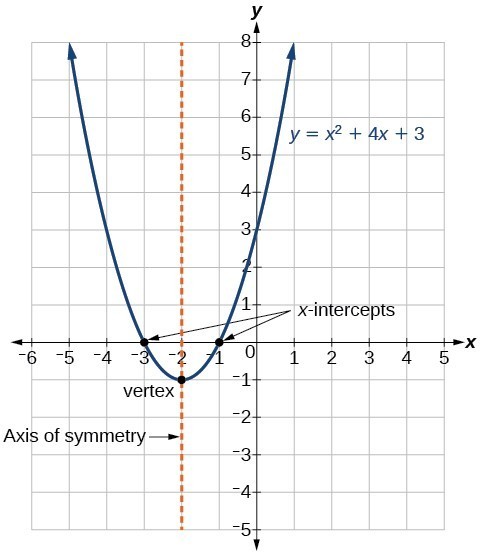

So the function with the highest |A| grows ( or falls, for A |2|, g(x) has a narrower graph. Its impact depends on |A| (magnitude of A). Coefficient A has a multiplying effect on the growth of x 2. The x 2 term grows faster than all the other terms combined. Between any two quadratic graphs, the one with a larger magnitude of A will be narrower. The width of a graph is a comparative feature. The graph intersects the x-axis at two points. In the graph below, the corresponding function has a positive discriminant. If the discriminant is zero, the graph will touch the x-axis at one point, so there is only one x-intercept. Discriminant of function f(x) = B 2 − 4AC = − 4.When the discriminant is negative, the graph will not touch the x-axis. ✩ Formula – Roots of a Quadratic Function If D If D = 0, graph just touches the x-axis and therefore only one x-intercept.The existence of roots depends on the sign of the discriminant D. You would have observed above that not all the graphs intersect the x-axis. The x-intercept is a point where a graph intersects the x-axis. On the y-axis, value of function equals the corresponding value of C.Īs C is the y-intercept, even the graphs of different quadratic functions with the same value of C will coincide on the y-axis. The graphs are shifted vertically (by the difference of respective C values).

Similarly, the difference in y-values of h(x) and g(x) is 1 ( = 2 – 1 ). The difference in y-values of g(x) and f(x) is 2 ( = 1 – (-1) ). The graphs below show this shift using the following functions: If C is positive, the graph shifts up, and if C is negative, it shifts down. The value of C increases (or decreases, if C is negative) the value of the function. Therefore y-intercept is always equal to (0, C). So its y-coordinate is easy to calculate: The y-intercept is a point where the graph hits the y-axis. The axis of symmetry passes through x = -1 and is parallel to the y-axis. Using the formula above, you can calculate x and y values of the vertex as:

What are the attributes of these graphs? How can we use them in graphing the function? Attributes of a Quadratic Graph I will stop here.Some quadratic graphs are upwards, some downwards, some intersect with the x-axis, others not. The diagram shows that it fails the Horizontal Line Test, thus the inverse is not a function. I will not even bother applying the key steps above to find its inverse. I am sure that when I graph this, I can draw a horizontal line that will intersect it more than once. The first thing I realize is that this quadratic function doesn’t have a restriction on its domain. Switch the roles of \color + 2, if it exists.Key Steps in Finding the Inverse Function of a Quadratic Function


 0 kommentar(er)
0 kommentar(er)
